A Self-Assessment Guide for Health Care Organizations - IFC
A Self-Assessment Guide for Health Care Organizations - IFC
A Self-Assessment Guide for Health Care Organizations - IFC
You also want an ePaper? Increase the reach of your titles
YUMPU automatically turns print PDFs into web optimized ePapers that Google loves.
Measurable Element Look <strong>for</strong> Score Observations<br />
What is required<br />
2) There is coordination<br />
of services:<br />
a. within each<br />
department (e.g.<br />
through regular staff<br />
meetings, reporting<br />
mechanisms,<br />
development of<br />
admission/ transfer/<br />
discharge criteria), and<br />
b. between departments.<br />
How is this element<br />
assessed<br />
Coordination is described in the<br />
departmental scope of services and<br />
policies/procedures. This could<br />
include regular staff meetings,<br />
grand rounds, interdisciplinary<br />
team meetings; reporting processes<br />
(e.g. shift reports). Coordination<br />
between key departments is also<br />
described, e.g. between an<br />
orthopedic unit and a<br />
physiotherapy department, or<br />
these might include outside<br />
services, e.g. the emergency<br />
department describes their process<br />
<strong>for</strong> coordinating with ambulance<br />
services. Admission and discharge<br />
criteria are written <strong>for</strong> each<br />
inpatient department.<br />
0 5 10 Why did you give this score<br />
........................................................<br />
........................................................<br />
........................................................<br />
........................................................<br />
........................................................<br />
........................................................<br />
........................................................<br />
........................................................<br />
3) The department<br />
director develops and<br />
applies criteria related to<br />
the required level of<br />
education, skills,<br />
knowledge and experience<br />
of the department’s<br />
professional staff.<br />
4) The director ensures<br />
that there is a process <strong>for</strong><br />
authorizing all medical<br />
professionals to admit and<br />
treat patients,<br />
commensurate with their<br />
training and qualifications<br />
(clinical privileges).<br />
Job descriptions describe<br />
education, skills and knowledge<br />
required. A library of recognized<br />
medical qualifications is developed.<br />
Annual per<strong>for</strong>mance appraisals<br />
document staff competency. This<br />
in<strong>for</strong>mation is used to plan staff<br />
training and development.<br />
A list of the clinical privileges <strong>for</strong><br />
each physician is available in the<br />
departments and other areas<br />
where they work.<br />
........................................................<br />
........................................................<br />
........................................................<br />
........................................................<br />
........................................................<br />
........................................................<br />
........................................................<br />
........................................................<br />
<strong>IFC</strong> <strong>Self</strong>-<strong>Assessment</strong> <strong>Guide</strong> <strong>for</strong> <strong>Health</strong> <strong>Care</strong> <strong>Organizations</strong> 21



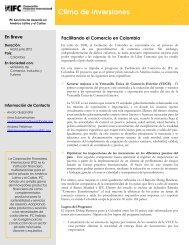
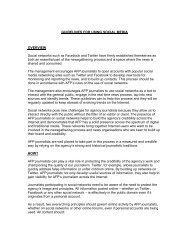
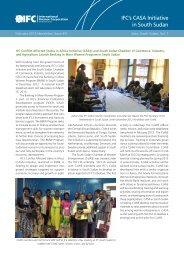

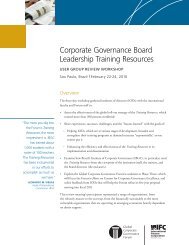




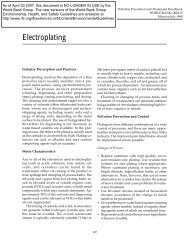

![Print a two-page fact sheet on this project [PDF] - IFC](https://img.yumpu.com/43449799/1/190x245/print-a-two-page-fact-sheet-on-this-project-pdf-ifc.jpg?quality=85)


